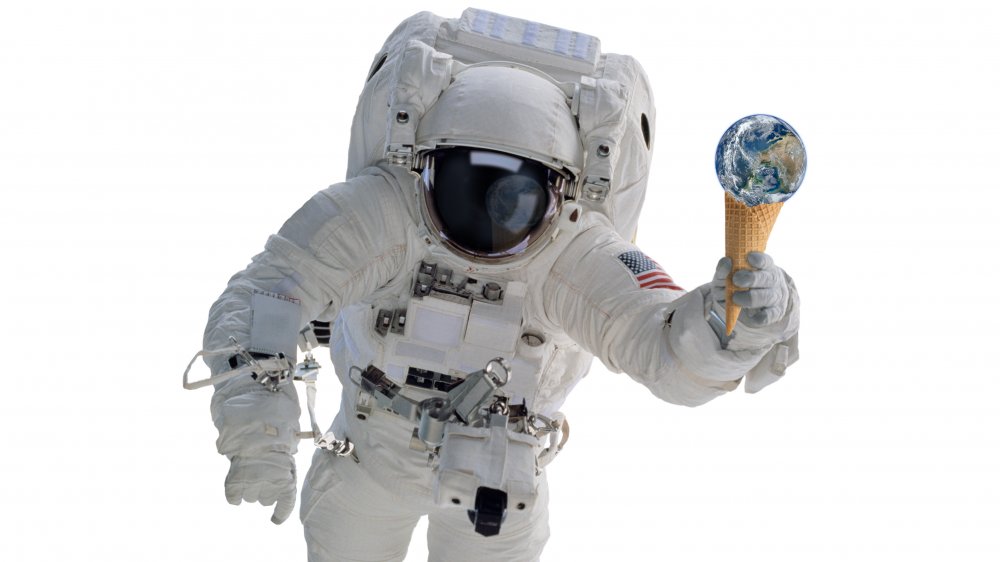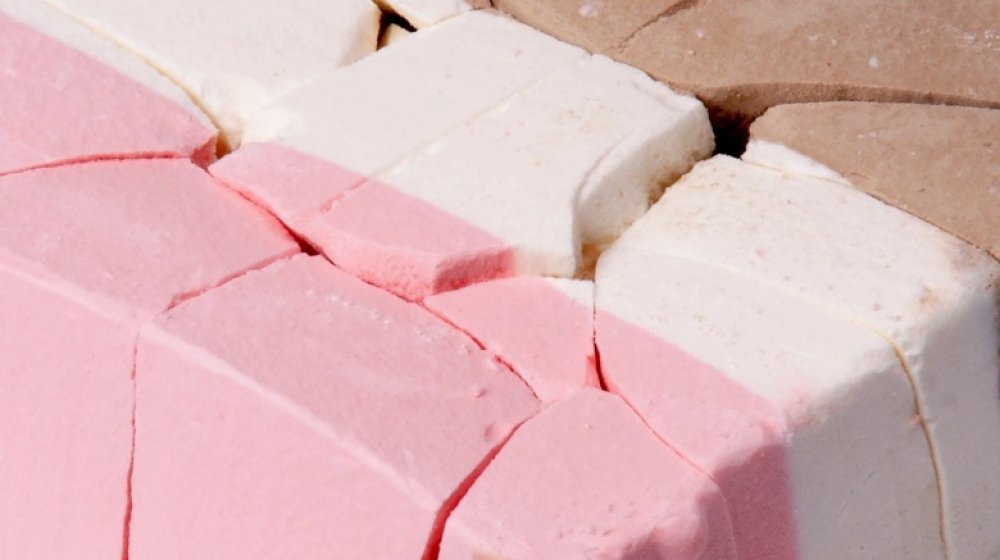The True History Of Astronaut Ice Cream
Astronaut ice cream. Matt Damon didn't eat it in The Martian. Matthew McConaughey and Anne Hathaway were deprived of it in Interstellar. Hillary Swank didn't snack on it in Away. "Why?" you're all desperately asking. After all, food scientist Vickie Kloeris, who started working with space food systems around 1985, said that astronaut ice cream flew once during the Apollo program (via NPR). NASA's Apollo 7 press kit seems to confirm it. Vanilla ice cream was listed part of the Apollo 7 team's "Meal B" menu along with salmon salad, butterscotch pudding, and grapefruit drink.
Except, as Stephen Colbert announced to the world in 2016, "Astronaut Ice Cream is a Fraud ... So I hope you had a good childhood because it's over now." In 2019, Apollo 7 crewmember Walt Cunningham told Vox, "We never had that stuff." Jennifer Levasseur, the museum curator at the National Air and Space museum, backed up Cunningham. "It probably got made, tested on the ground, and rejected," she mused. "They do always get to try things in advance, and they probably thought it was as horrible as it actually is when you buy it in the gift shop."
Levasseur and Cunningham are likely right. Astronaut ice cream is crumbly. And, as astronaut Chris Hadfield once explained (via CNET), that's dangerous in space: "How could we have something up here that crumbled and crunched? ... It would get in my eyes. We'd breathe it. There would be crumbs floating everywhere."
How astronaut ice cream made it big
Whirlpool Corporation developed the astronaut ice cream that probably didn't make it onto Apollo 7 by cooling ice cream to below 5 degrees Fahrenheit and then using a vacuum pump to evaporate the ice while preventing it from melting (via Phys.org). The astronaut ice cream that your childhood memories are made of, however, comes from Ron Smith, founder of American Outdoor Products.
In the late 1970s, Smith got an email from a company he worked with to make freeze-dried goods. "They said, 'Goddard Air and Space Museum contacted us and said that freeze-dried ice cream was used by the space program. They want to know if we can make it, so they can sell it in their gift shop," Smith recounted to Serious Eats. They recreated the stuff using frozen-solid half-gallon batches of Neapolitan ice cream, cutting it with a bandsaw and freeze-drying it with a special machine that converted ice to gas state.
What's so special about freeze-drying? As Robert Collignon, founder Cosmik (an artisanal freeze-dried ice cream company) told Vice, "Freeze-drying allows you to maintain the structure because the ice cream doesn't actually melt; it goes straight into a gas state and leaves all the air pockets." The end result sounds like ice cream-flavored foam. "When you put it in your mouth, it takes a few seconds to actually absorb the moisture in your mouth and meltdown into the sweet creamy ice cream you are used to," Collignon explained.

